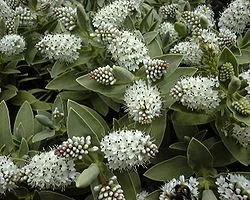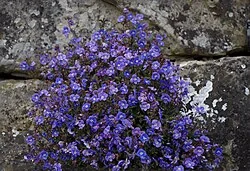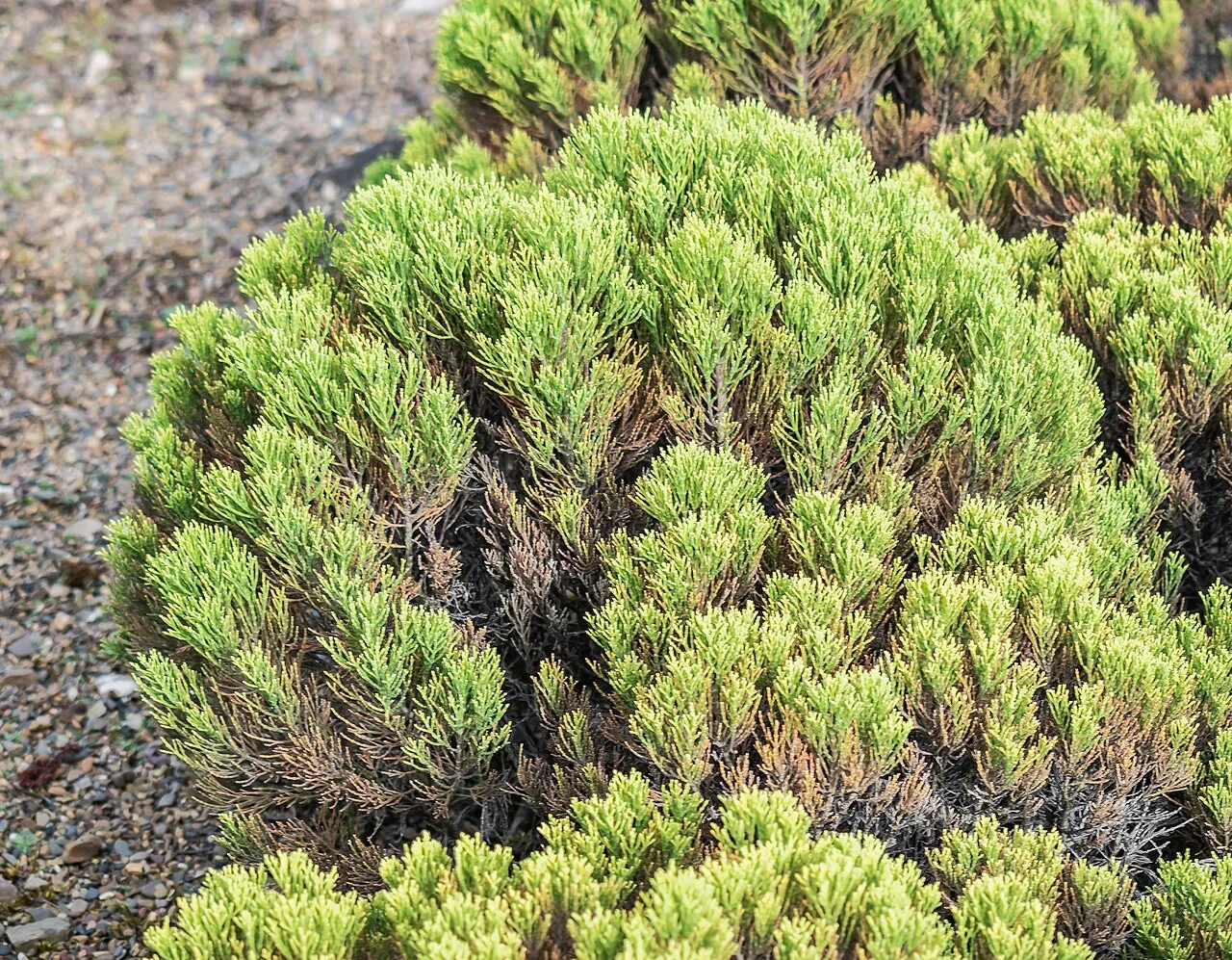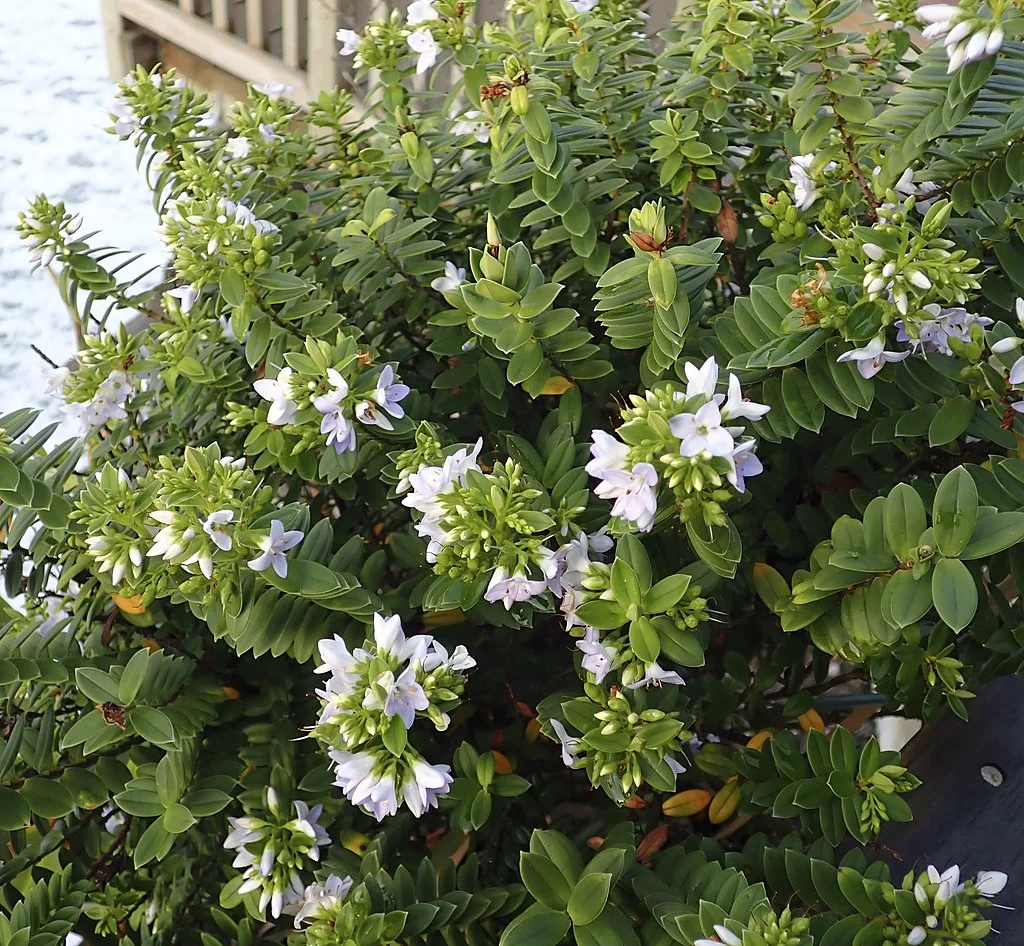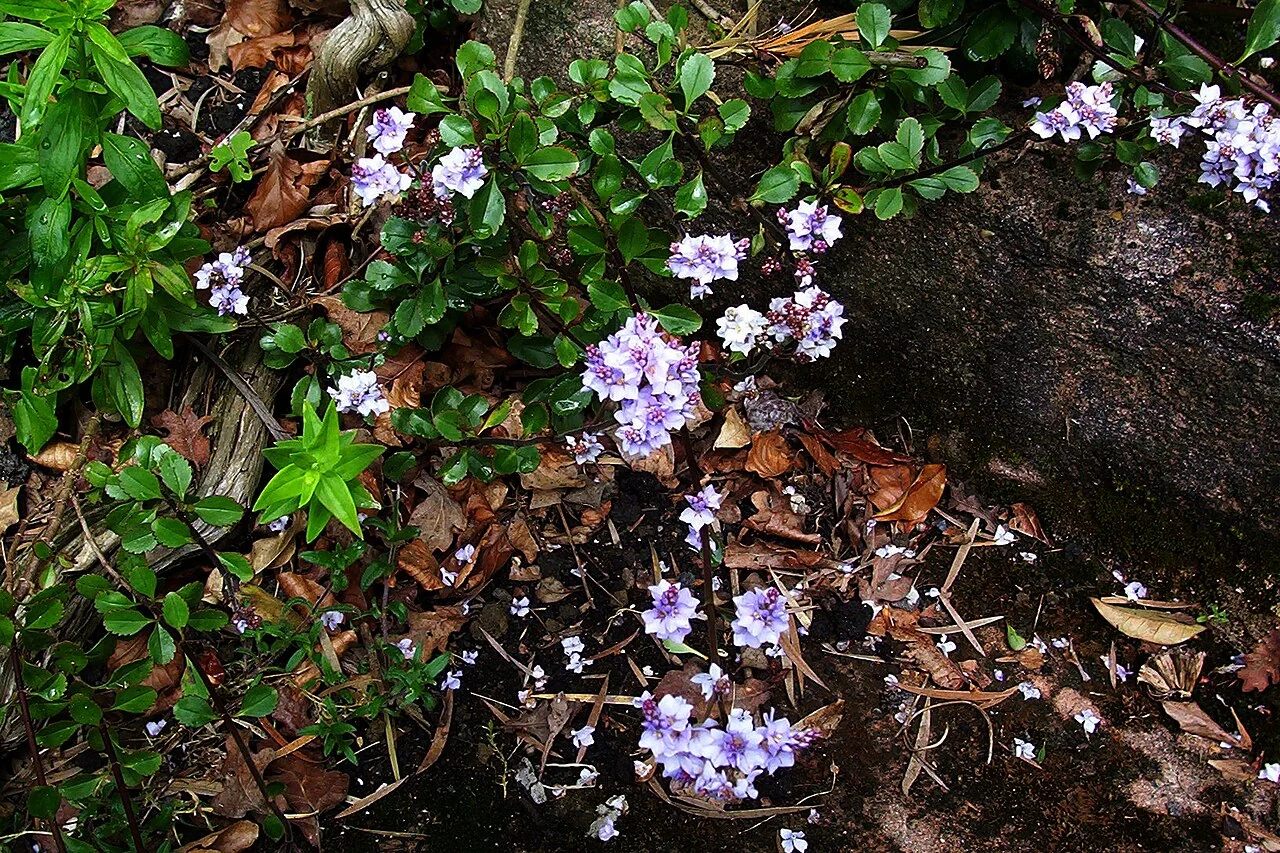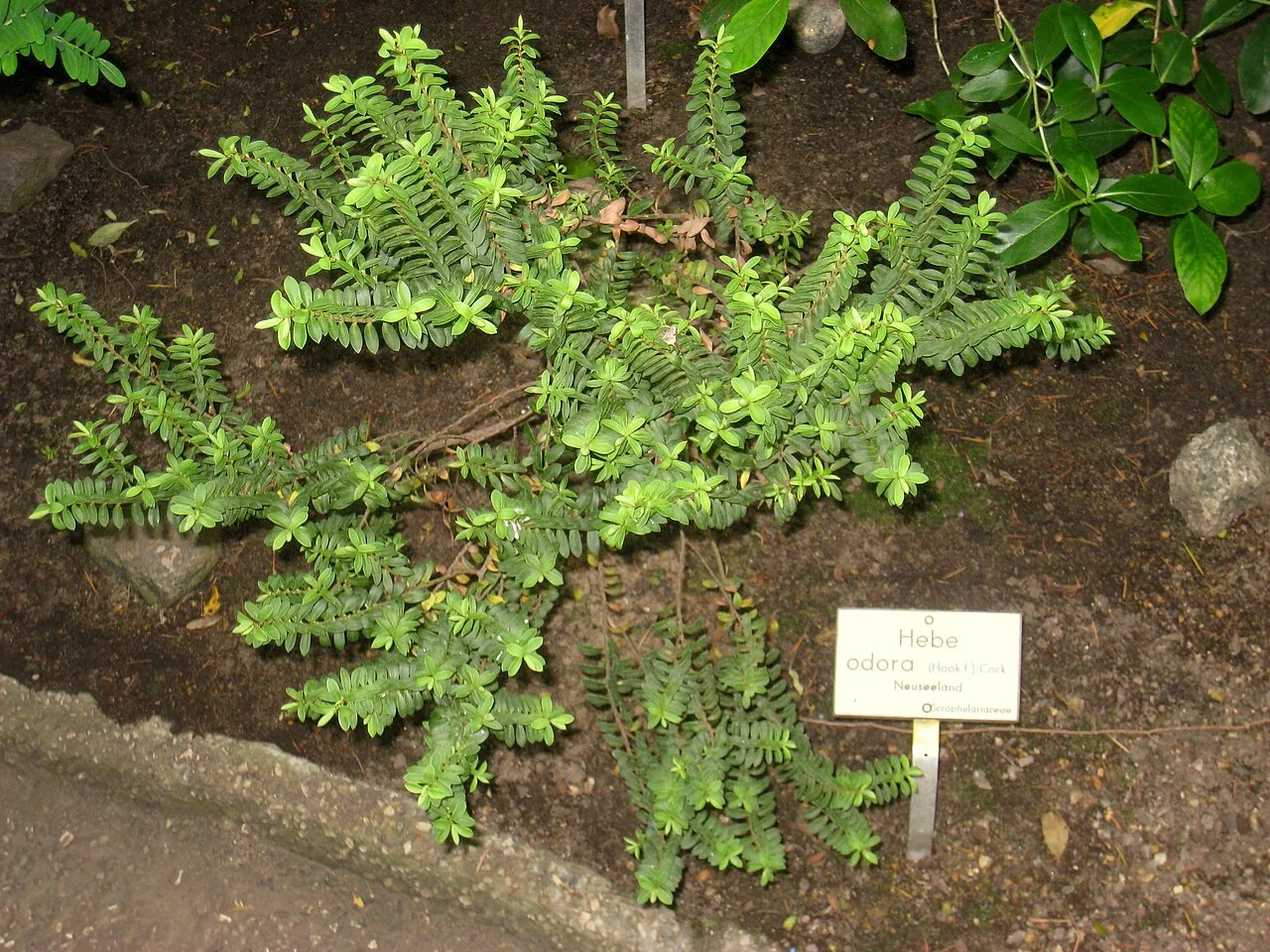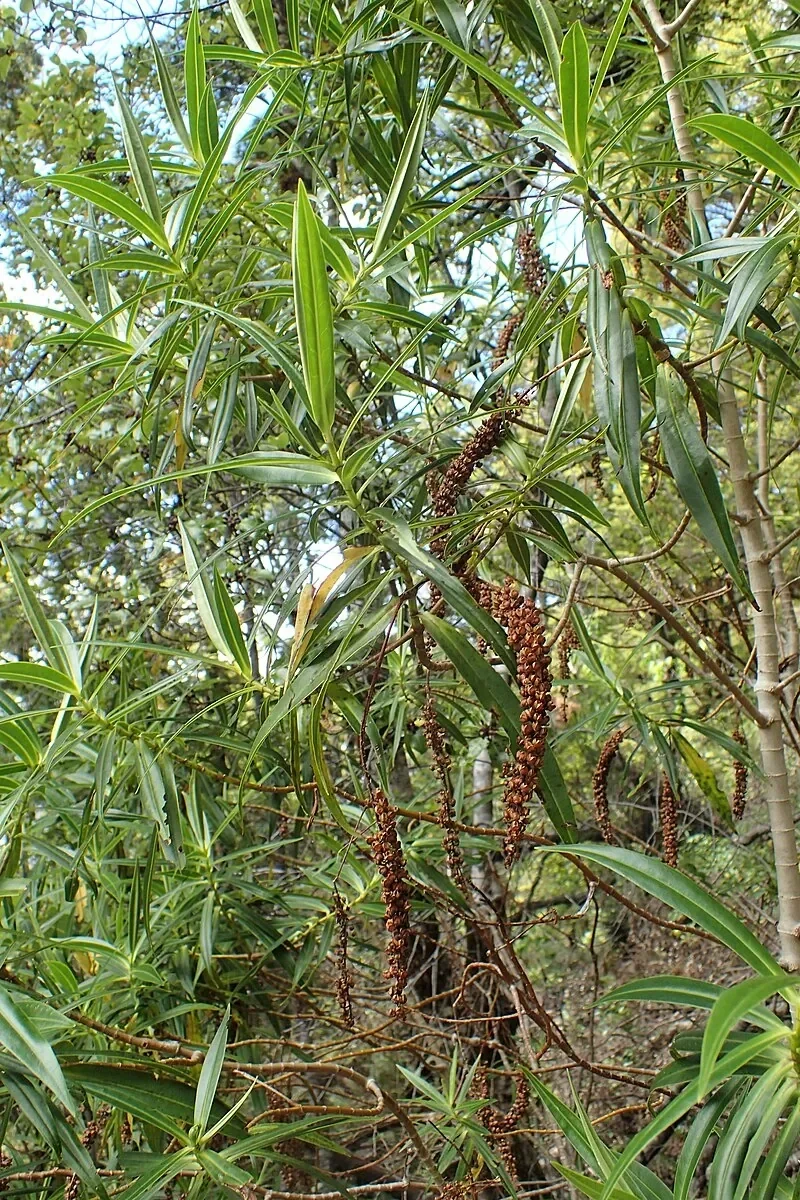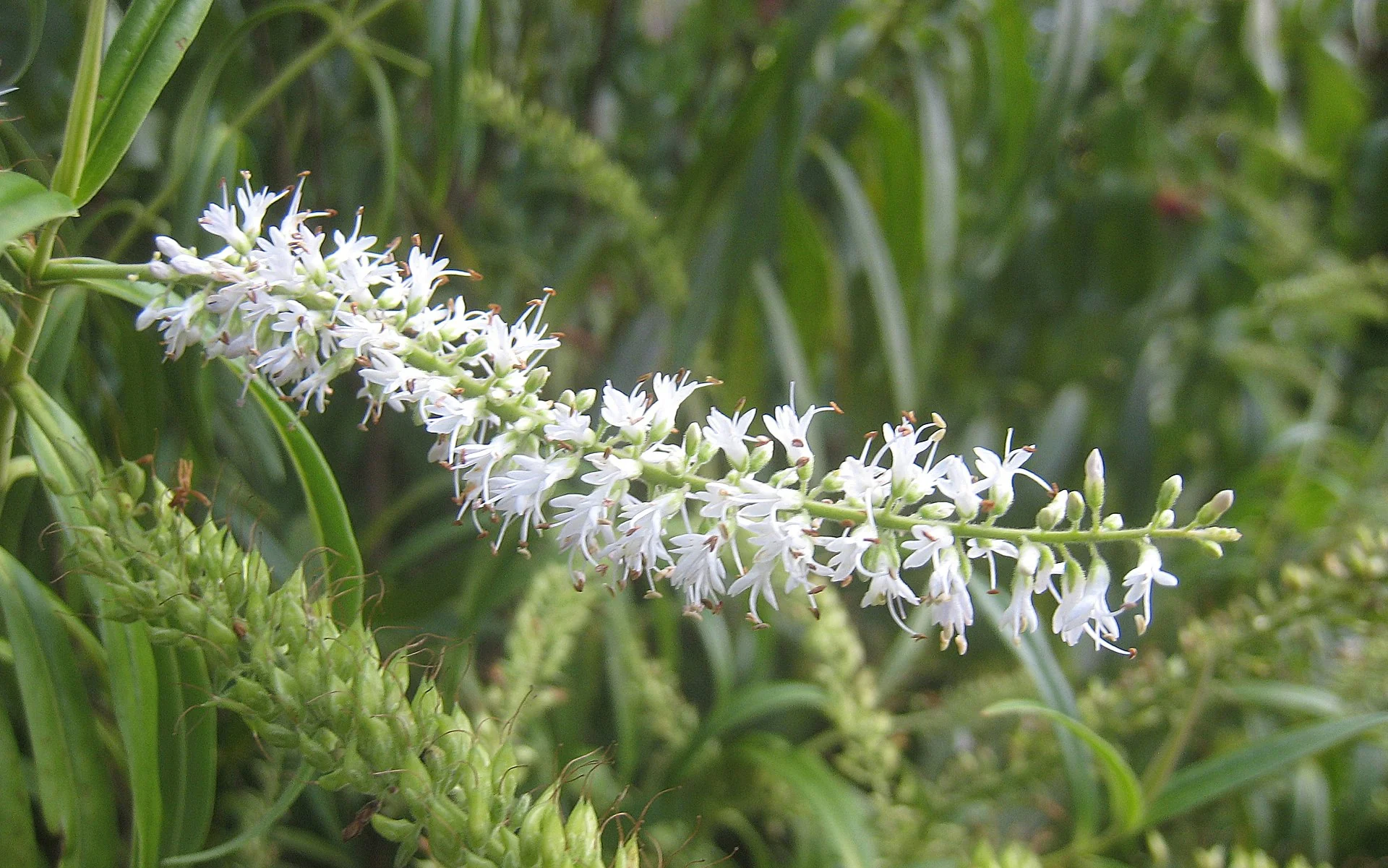
Koromiko
Veronica stricta
Introduction
Koromiko (scientific name: Veronica stricta ) is one of New Zealand's most recognizable native shrubs, famous for its striking spikes of small white or pale blue flowers that attract countless native birds and beneficial insects. This hardy, fast-growing shrub features narrow, serrated leaves and an upright growth habit, making it an excellent choice for hedging, screening, and wildlife gardens. Endemic to New Zealand, it's treasured for its reliability and ecological value. Explore more in the native plants index .

Koromiko ( Veronica stricta ) is a native species valued in gardens and restoration for its form and resilience in suitable conditions. Learn more about native shrubs in our native plants guide.
Plant Description
Botanical Features
Koromiko ( Veronica stricta ), also known by its synonym Hebe stricta , is a flowering plant belonging to the family Plantaginaceae, and it is endemic to New Zealand. This species is a variable shrub, growing from a spreading, low form to a tall, bushy shrub up to 4 meters high. It typically features long, pale green, linear-lanceolate leaves that can range from 2 to 5 inches long and 1/3 to 3/4 inches wide, tapering to an acute or acuminate tip. The leaves are generally not glossy and are glabrous (hairless) except for fine down along the margins and midrib. In summer, Veronica stricta produces tiny white or pale lilac flowers arranged in dense racemes (spike-like inflorescences) that are often longer than the leaves. The corolla is typically about 3/16 inch long, with a slender tube longer than the calyx, and rounded lobes shorter than the tube. The style and top of the ovary are downy. Koromiko is a hardy plant that thrives in full sun and open habitats, such as the edges of bushes and wetlands, as it tolerates wet areas. It does not tolerate shade. It is found throughout the North and South Islands of New Zealand, in lowland to sub-alpine areas, often in disturbed sites like rock outcrops, banks, roadsides, and forest clearings.
Quick Facts
Essential Information
| Scientific Name | Veronica Stricta |
|---|---|
| Height | 1 - 4 m |
| Spread | 1 - 2 m |
| Water Needs | Moderate |
| Light | Full sun to partial shade |
| Frost Tolerance | High |
| Salt Tolerance | Moderate |
| Growth Rate | Fast |
| Lifespan | Shrub |
Climate Best Suited to
Koromiko is an extremely adaptable plant that thrives in a wide range of climates throughout New Zealand. It is particularly common in the North Island. It handles frost, wind, and coastal conditions well, making it a versatile choice for most gardens.
Regional Suitability
| Whangārei | Ideal |
| Auckland | Ideal |
| Hamilton | Suitable |
| Rotorua | Suitable |
| Tauranga | Ideal |
| Gisborne | Ideal |
| New Plymouth | Ideal |
| Whanganui | Ideal |
| Palmerston North | Suitable |
| Napier | Ideal |
| Wellington | Ideal |
| Nelson | Ideal |
| Christchurch | Suitable |
| Dunedin | Suitable |
| Invercargill | Suitable |
| City | Climate Suitability |
|---|
Natural Habitat
Koromiko ( Veronica stricta ), also known by its synonym Hebe stricta , is an evergreen shrub endemic to New Zealand. It is highly adaptable and can be found in a variety of natural habitats across the North Island and the top of the South Island.
Key Habitats Include:
- Forest Margins and Clearings: It is commonly found in forest margins and clearings, as well as in regenerating bush and along stream banks.
- Coastal to Montane Regions: It thrives in diverse open habitats, including coastal to montane regions (0-1451 meters elevation), rock outcrops, banks, roadsides, scrub, and slips.
- Wetland Edges: It tolerates wet areas and is often found on the edge of wetlands.
- Urban and Successional Areas: It can also appear as an urban weed in hedgerows, along river banks, or in parks, showcasing its adaptability to disturbed and successional areas.
Preferred Conditions:
- Full Sun: It prefers full sun and well-draining soil with organic matter. It does not tolerate shade.
- Tolerance: It is a hardy plant that handles frost, wind, and coastal conditions well, making it a versatile choice for most gardens.
Varieties:
- Specific Habitat Preferences: Some varieties have more specific habitat preferences; for example, Veronica stricta var. lata is common in open sites within montane forest and subalpine scrub, while Veronica stricta var. macroura is strictly coastal, often growing on cliff faces and associated talus slopes.
The widespread distribution and adaptability of Veronica stricta underscore its ecological importance in contributing to the biodiversity and structural complexity of New Zealand's natural landscapes.
Plant Conservation
Veronica stricta , commonly known as Koromiko or Hebe stricta , is a flowering plant endemic to New Zealand. The main species, Veronica stricta var. stricta , is generally classified as "Not Threatened" in New Zealand. It is a widespread and common shrub found throughout the North Island and parts of the South Island, thriving in various open habitats including coastal areas, lower montane regions, forest margins, and wetlands. It is known for its hardiness and ability to tolerate full sun, wind, and coastal conditions. While the overall species is not considered threatened, some of its varieties have different conservation statuses. For example, Veronica stricta var. egmontiana is assessed as "At Risk - Naturally Uncommon" due to its restricted distribution, primarily on Mt Taranaki, making it vulnerable to new adverse effects. The taxonomy of Veronica stricta and its varieties is complex and subject to ongoing study, which can influence precise conservation assessments.
Growing Requirements
Soil Requirements
Upright Hebe ( Veronica stricta ) thrives in well-draining soil with organic matter. Understanding its natural habitat in forest margins and clearings helps guide successful cultivation.
- Natural habitat: forest margins and clearings
- Soil preference: well-draining soil with organic matter
- Good drainage important for healthy root development
- Benefits from organic matter incorporation where appropriate
- Avoid conditions that differ significantly from natural habitat
Light Requirements
Upright Hebe ( Veronica stricta ) performs best in partial shade to full sun. This reflects its natural growing conditions and ensures optimal growth and health.
- Preferred light conditions: partial shade to full sun
- Plant in position that mimics natural habitat
- Consider seasonal light changes in garden placement
- Protect from extreme conditions if necessary
Water Requirements
Upright Hebe ( Veronica stricta ) has moderate, consistent moisture preferred. Understanding these needs ensures successful establishment and long-term health.
- Water requirements: moderate, consistent moisture preferred
- Regular watering important during establishment
- Adjust watering to match natural habitat conditions
- Monitor for signs of water stress
- Mulching can help maintain appropriate soil moisture
Planting Guide
Veronica stricta , also known as Koromiko or Upright Hebe, is a resilient and adaptable native shrub, particularly recognized in New Zealand for its spikes of white or pale blue flowers that attract pollinators. It is a hardy, fast-growing plant with an upright growth habit, making it suitable for hedging, screening, and wildlife gardens.
1. Planting Time
The most favorable times to plant Veronica stricta are in early spring or late autumn, allowing the plants to establish well. Spring is an active growth period, ideal for planting new specimens, while autumn is also suitable as temperatures cool.
2. Location and Light
Veronica stricta thrives in full sun but can also tolerate partial shade. For optimal bloom, it requires more than 14 hours of light per day; insufficient light can lead to overgrowth and difficulty flowering.
3. Soil Requirements
This plant prefers well-drained soil. It grows best in fertile, thick, sandy soil with a pH between 5.8 and 7.5. A mixed soil that ensures good permeability is recommended, potentially including clay, wood fibers (like bark and coconut bran), and sand in a 3:2:2:2 ratio. It cannot tolerate excessive moisture, especially in winter.
4. Propagation
Veronica stricta can be propagated by seeds or semi-hardwood cuttings.
- From Seeds: Sow seeds in early spring in flowerpots or gardens. For better germination rates, pre-soak seeds in water for 24 hours. Spread seeds on moist, well-draining soil, cover with a fine layer of soil, and maintain a temperature of around 20°C. Germination typically occurs in about 20 days. Seed trays indoors can protect young plants before transplanting.
- From Cuttings: Semi-ripe cuttings can be rooted with bottom heat in late summer or autumn.
5. Watering
Veronica stricta requires moderate and consistent moisture. Regular watering is important during establishment, but avoid waterlogging. Mulching can help maintain appropriate soil moisture.
6. Pruning
Pruning helps maintain shape, encourages bushy growth, and can rejuvenate older plants.
- General Pruning: The best time for general pruning is after the main flowering period, typically in late summer or early autumn.
- Shaping and Size Control: Trim the plant to maintain a compact and tidy shape.
- Hard Pruning: The plant responds well to hard pruning if it becomes leggy or too large.
- Winter/Early Spring Pruning: Prune in late winter or early spring to shape and invigorate the plant, removing dead, damaged, or overcrowded branches to promote healthier growth and better air circulation. Minimal pruning is often required.
7. Pests and Diseases
Veronica stricta may be susceptible to aphids, downy mildews, fungal leaf spot, fungal rot, Phytophthora , and sometimes honey fungus. It is a high-risk host for Xylella fastidiosa .
8. Size
The ultimate height of Veronica stricta can range from 1 to 4 meters, with a spread of 1 to 2.5 meters, typically reaching its full size in 5-10 years.
Ecological Role
Tall Koromiko
This upright hebe produces abundant nectar for insects and forms sheltering thickets on river terraces and coastal sites, contributing to native shrubland structure and wildlife corridors.
Uses and Significance
Ecological and Cultural Uses
- Revegetation: Its fast growth rate and hardiness make it an essential pioneer plant for revegetation and restoration projects.
- Rongoā (Traditional Māori Medicine): Koromiko is one of the most important plants in rongoā. The leaves were used to treat dysentery and diarrhoea, and as a poultice for wounds.
- Garden Hedging: It can be clipped into a dense hedge and is often used for this purpose.
- Pollinator Plant: The flowers are an important food source for native bees, flies, and butterflies.
Cultural Significance
Traditional Uses and Values
Veronica stricta , commonly known as Koromiko, holds significant cultural importance, particularly in New Zealand where it is endemic. Its cultural significance is deeply rooted in traditional Māori practices (Rongoā), where it is considered one of the most important plants. The leaves of Koromiko were traditionally used to treat ailments such as dysentery and diarrhea, and were also applied as a poultice for wounds. A sticky substance extracted from young leaf buds was historically combined with blue pollen from Fuchsia excorticata to create a form of make-up. Beyond medicine, Koromiko had other practical uses, including lining hāngī (earth ovens) to flavor cooked meat and using its twigs for fires to cook moa. During the early European colonial era, the medicinal properties of Koromiko were recognized, with its leaves or extract being sold as an antidiarrheal remedy. Its use for stomach disorders continued into the World Wars, with dried leaves even being sent to Māori troops in Egypt during World War I. Ecologically, Koromiko is valued as a pioneer plant, playing a crucial role in revegetation and restoration projects due to its rapid growth and hardiness. Its flowers also serve as an important food source for native pollinators, including bees, flies, and butterflies. In contemporary settings, it is widely used for garden hedging and as an ornamental plant due to its attractive appearance and resilience.
Landscaping Ideas
Shrub Borders and Corridors
Tall koromiko forms fast shelter and nectar-rich screens in native shrub borders and riparian corridors. Tolerant of coastal winds and light frost.
Seasonal Care Calendar
Spring
Spring is an active growth period for Upright Hebe ( Veronica stricta ). New growth emerges and this is an ideal time for planting new specimens. Monitor soil moisture as temperatures warm and growth accelerates.
- Active growth period with new development
- Ideal time for planting new specimens
- Monitor soil moisture as growth increases
- Apply organic mulch if needed
Summer
Summer is typically the main growing season for Upright Hebe ( Veronica stricta ). Summer flowering occurs during this period. Ensure adequate watering during hot, dry periods according to the plant's specific needs.
- Peak growing season with active development
- Monitor watering needs during hot weather
- Flowering period: summer
- Established plants show good heat tolerance with appropriate care
Autumn
During autumn, Upright Hebe ( Veronica stricta ) begins to slow its growth as temperatures cool. This is another good time for planting as conditions become more favorable. Reduce watering frequency but maintain appropriate soil moisture.
- Growth slows as temperatures moderate
- Good time for planting new specimens
- Reduce watering frequency gradually
- Maintain appropriate soil moisture for species
Winter
Winter is typically a dormant period for Upright Hebe ( Veronica stricta ), with minimal growth activity. Reduce watering but ensure plants don't completely dry out if they require consistent moisture. Most New Zealand natives are cold-hardy.
- Dormant period with minimal growth activity
- Adjust watering to seasonal needs
- Generally cold-hardy in most New Zealand climates
- Minimal winter protection required for most natives
When to Prune and How Much
Overview
Upright Hebe ( Veronica stricta ) generally requires minimal pruning to maintain its natural form and health. Most maintenance involves removing dead or damaged growth and light shaping if needed.
- Remove dead, damaged, or diseased growth as needed
- Light pruning to maintain shape if desired
- Prune after flowering if applicable
- Avoid heavy pruning which can stress the plant
- Use clean, sharp tools to prevent disease
- Most natives maintain good form without regular pruning
Always use clean, sharp tools when pruning to minimize disease risk. Native plants typically maintain their natural form well and often require less intervention than exotic species.
How to Grow Koromiko
Koromiko is a highly adaptable and robust native shrub, making it an excellent choice for a wide range of garden and restoration projects. Its ease of cultivation, coupled with its attractive foliage and abundant flowers, ensures it is a popular and reliable plant. It thrives in full sun to partial shade and is tolerant of various soil types, provided there is good drainage. Its hardiness to frost, wind, and moderate drought makes it a versatile addition to almost any New Zealand garden.
From Cuttings
Koromiko is exceptionally easy to propagate from cuttings, with a high success rate. Semi-hardwood cuttings can be taken almost any time of the year, though late summer or autumn are often ideal. Select healthy, non-flowering shoots about 4-6 inches long. Remove the lower leaves and, if desired, dip the cut end in a rooting hormone. Insert the cuttings into a well-draining potting mix, ensuring at least two nodes are buried. Keep the cuttings moist and in a sheltered location with indirect light until they root. Many gardeners report success simply by placing cuttings directly into moist ground.
From Seed
Koromiko also germinates readily from seed and will often self-seed in gardens. Fresh seeds generally have the best germination rates. Sow seeds in spring or autumn onto a tray of moist, well-draining seed-raising mix. Lightly cover the seeds with a thin layer of fine soil or grit, as some light can aid germination. Pre-soaking seeds in water for 24 hours before sowing can further improve germination rates. Keep the seed tray consistently moist and in a sheltered spot. Once seedlings are large enough to handle, they can be pricked out and potted into individual containers to grow on before planting out.
Pests and Diseases
Very Hardy
This hebe is generally very healthy and robust. It can be subject to leaf-roller caterpillars and a leaf-spotting fungus, but these are rarely serious problems.
Bonus Tip
Expert Growing Advice
Koromiko ( Veronica stricta ) responds to coppicing. Cut back a third of old stems in late winter to ground level; vigorous new shoots will flower strongly and keep the shrub youthful and full.
